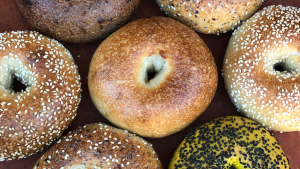Video tells history of different bread eaten on Shabbat worldwide
Three different kinds are featured: “dabo,” “kubaneh” and challah.
Published August 26, 2021
(August 26, 2021 / JNS) One Table, an organization that empowers men and women in their 20s and 30s to envision new rituals and build Jewish community through Shabbat dinner, has released a new episode in its 12-month video series.
In collaboration with the Jewish Food Society, it highlights three different kinds of Shabbat bread from around the world, exploring different food histories. These include dabo, kubaneh and challah.
Along with the two-minute video tour of Shabbat bread, OneTable has also a curated resource page all about savoring Shabbat, including “The Memory Dinner” and “From Generation to Generation” Shabbat guides, mindful eating resources, blogs and more.
The latest Pew Research Study on Jewish Americans in 2020 affirmed that young Jewish adults are spiritually connected and crave community, though not necessarily within institutional walls. OneTable’s DIY approach to Shabbat—tailored support, coaching and online resources to make ritual personally meaningful, plus financial boosts in the form of “Nourishment Credits” if cost is a barrier for hosts—enable both host and guest to create personalize dinner/community experiences.
















